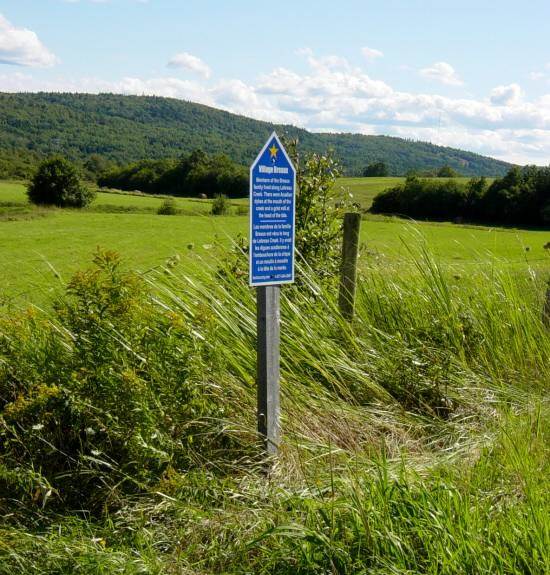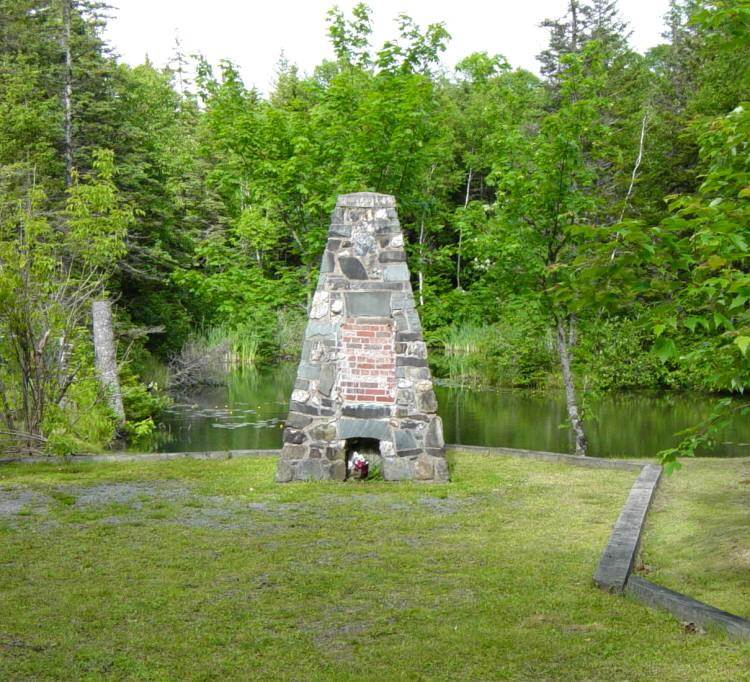
Collapse of the Moose River Gold Mine
12-22 April 1936
Moose River Gold Mines
Halifax Regional Municipality Nova Scotia
Located at Moose River Gold Mines provincial park
GPS location: 44°58’53″N 62°56’41″W
J. Frank Willis mesmerized a nation
with his 1936 live radio reports
from the Moose River, Nova Scotia,
gold mining disaster when three men
were trapped 150-feet down for six days.
— Pat MacAdam in the Ottawa Sun, 8 January 2006
In 1950, the Canadian Press voted the Moose River mine cave-in as
Canada’s top radio news story of the first half of the 20th century
(a period that included World War Two 1939-1945).

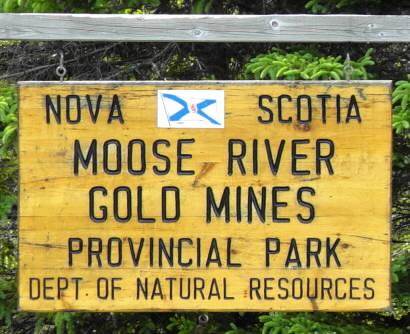
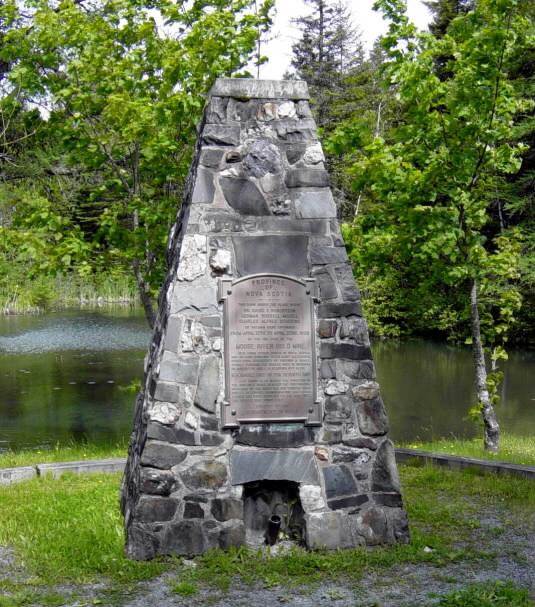
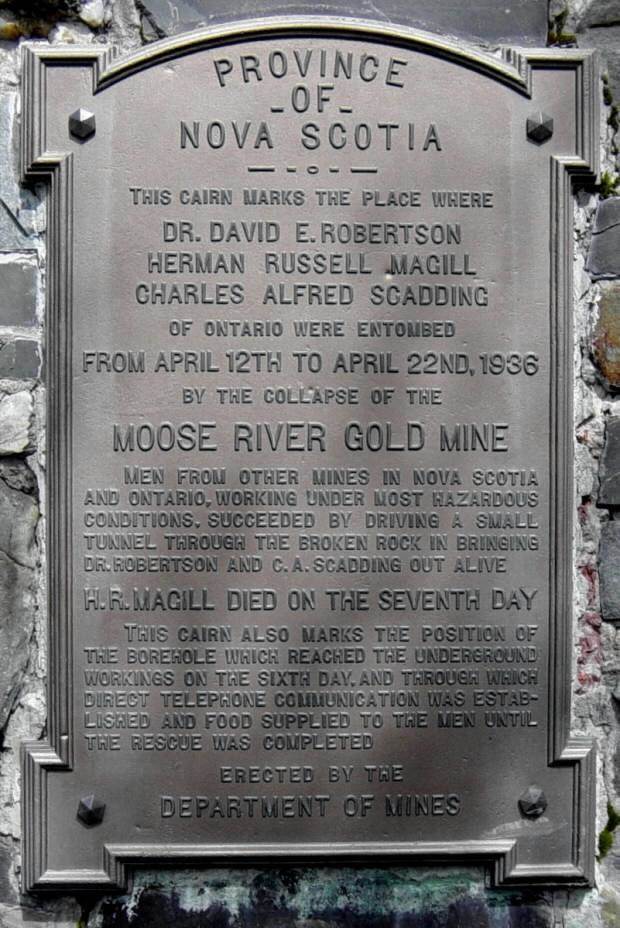
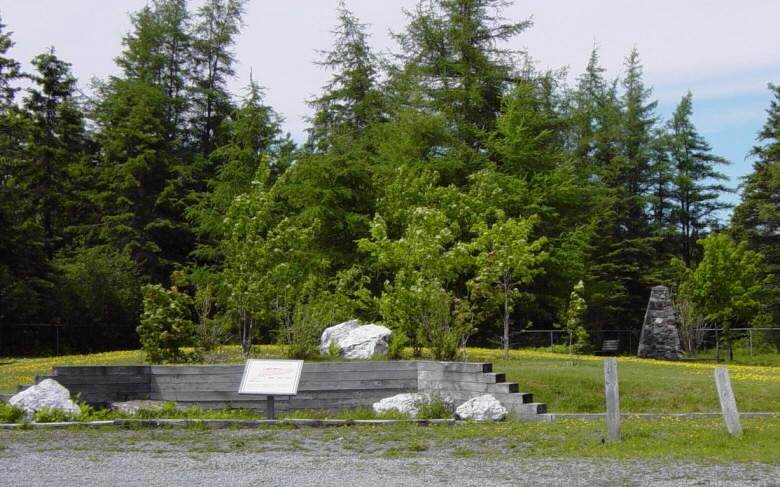
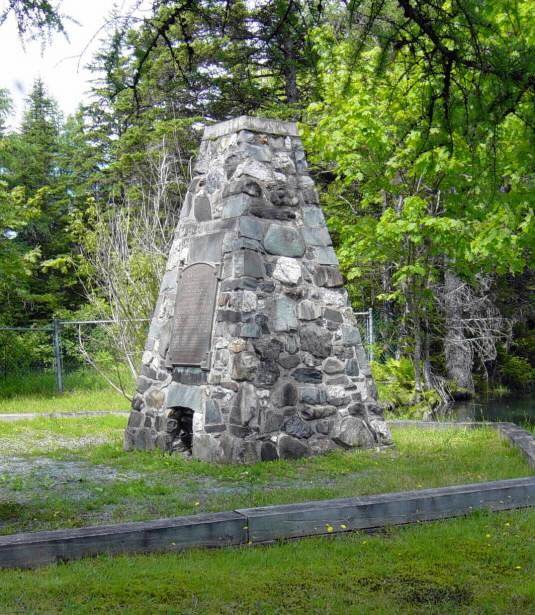
The 1936 borehole is seen in the recess below the plaque.
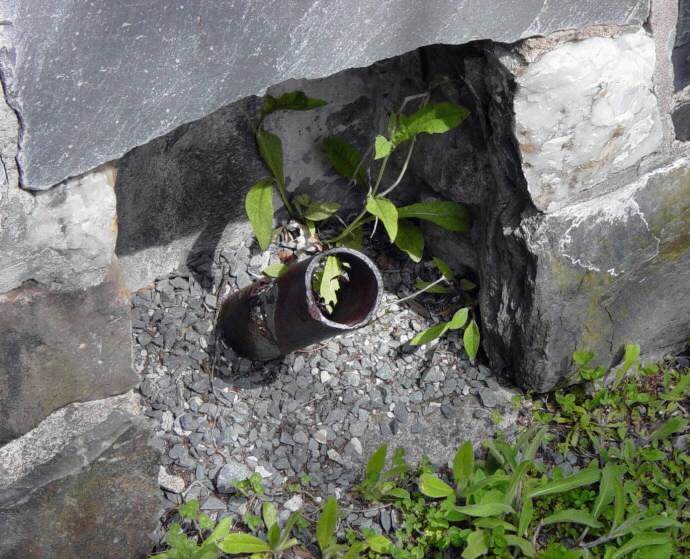
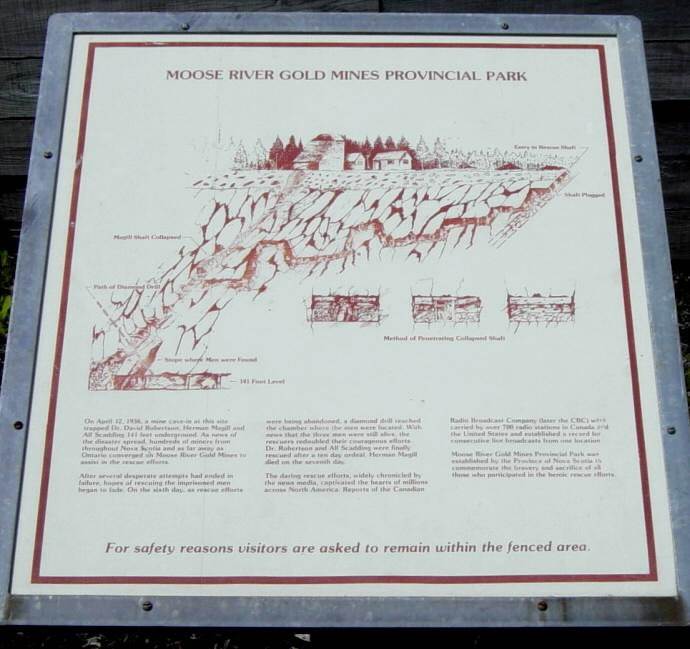
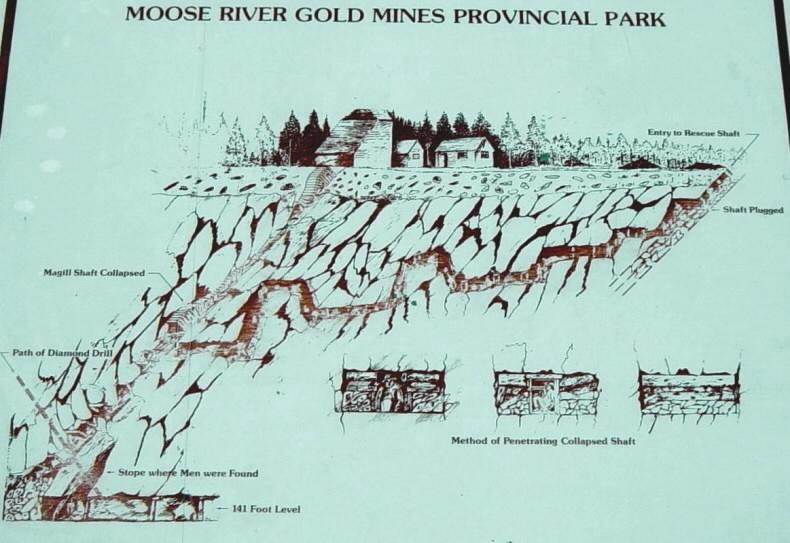

Note: The CRBC, the predecessor of today’s CBC, was
named the Canadian Radio Broadcasting Commission,
(not “Broadcast Company” as stated on the interpretative panel).
The Canadian Broadcasting Corporation (CBC) was incorporated,
to replace the CRBC, on 2 November 1936, just six months after
the Moose River Gold Mine collapse and subsequent rescue.
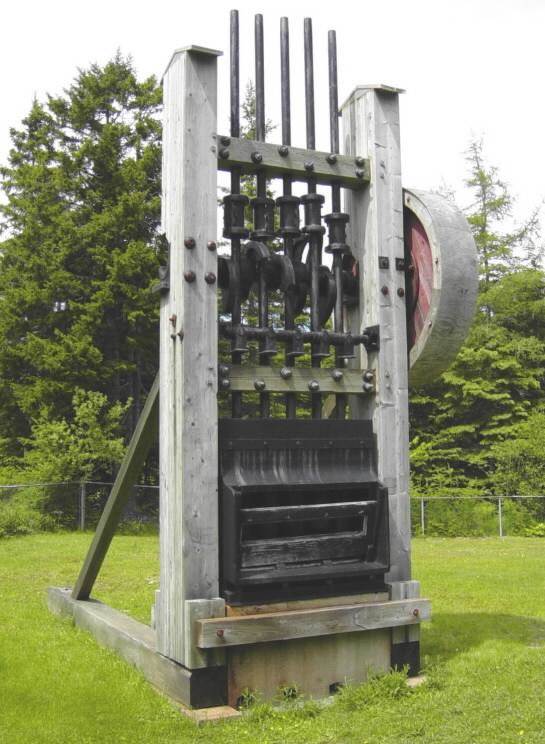
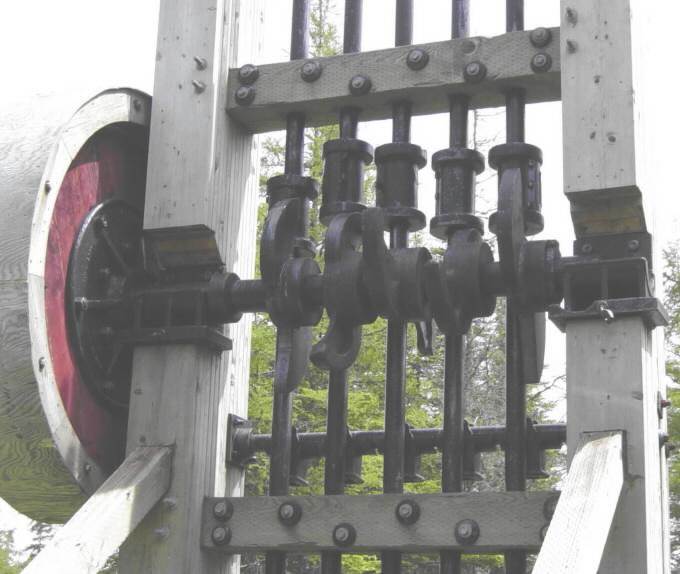
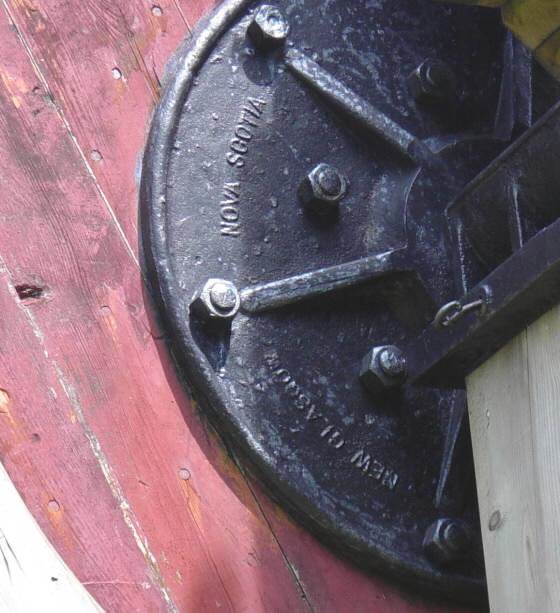
Stamp mill, manufactured at New Glasgow, Nova Scotia

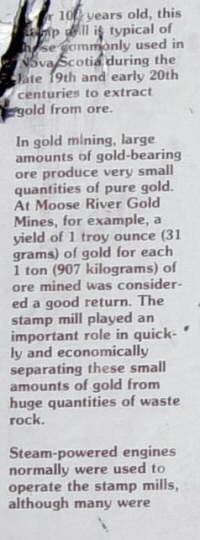
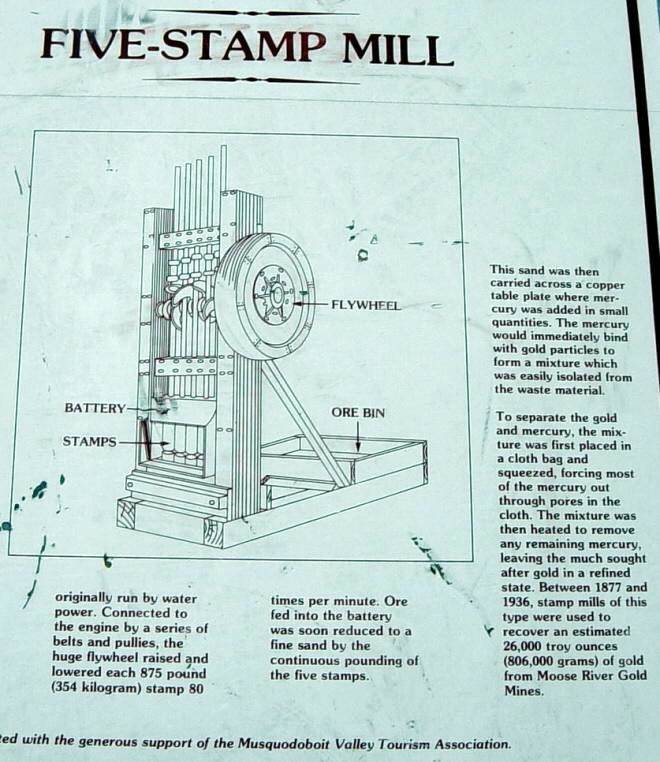
The above photographs were taken on 21 June 2003.

The plaque has been pried off and stolen by persons unknown
Photographed on 28 June 2006

Photographed on 28 June 2006
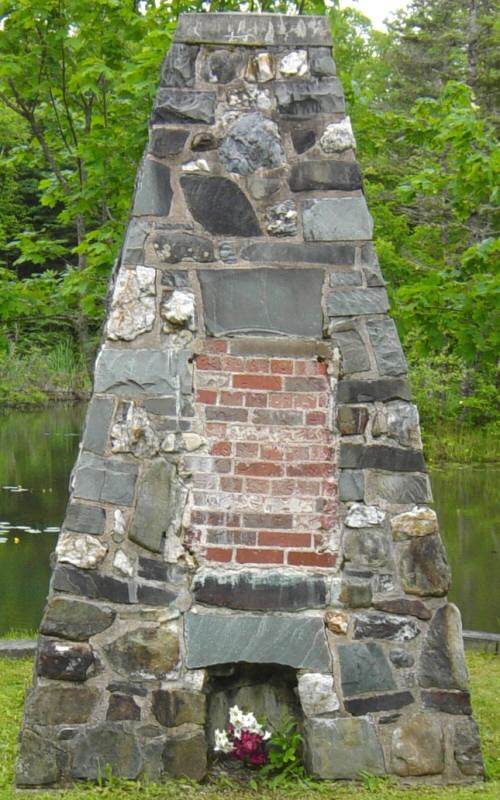
Photographed on 28 June 2006
J. Frank Willis made famous by the 1936 Moose River mine disaster…
A live five-minute broadcast every half-hour for 69 hours…
The wide attention these frequent updates receive makes citizens realize
the power of radio, and jump-starts the Canadian radio industry…
Moose River Mine Broadcasts: J. Frank Willis
On April 20th, 1936, J. Frank Willis arrived at the pithead of the
Moose River Mine in Nova Scotia, with an engineer from CHNS Halifax,
and began what was to be a marathon 56 hours of radio coverage,
two minutes every half hour, as the rescuers fought to save the
two remaining survivors, who were eventually brought to the surface
late on the evening of April 23rd. It was estimated that 100 million
listeners heard all or part of Willis’s dramatic coverage, some of
which is heard here. The CRBC’s broadcasts were carried by the BBC
and broadcast to Europe, and were carried on 650 stations in the U.S.
Ten Days in Hell: The 1936 Moose River Mine Disaster by Shirley Collingridge
Frank Willis’ hourly updates jump started the Canadian radio industry.
And his reporting style turned the Moose River disaster into the
biggest radio story of the first half of the twentieth century…
Image of the Day: Moose River mine disaster
Moose River Mine Disaster
Photograph: Major Borrett saying good-bye to Arleigh Canning, Cecil Landry,
Frank Willis and Tooky Murphy en route to Moose River, 1936.
They were to broadcast from the accident site for CHNS radio.
Moose River Mine Disaster CBC Archives
For 56 hours straight, J. Frank Willis of the CRBC (precursor to the CBC)
stayed awake to give radio reports every half-hour until two survivors were
rescued on April 23. Willis’s groundbreaking round-the-clock coverage
changed perceptions of the purpose of radio, and influenced the path
CBC Radio would take in its formative years.
People in Holes NPR (U.S. National Public Radio) 25 July 2003
History tells us that the public will always respond
to stories about people trapped in holes…
J. FRANK WILLIS: It is a frozen country down here – drab and desolate; a country
of scrub and second growth; of rock – rock – relentless, hard, cruel-hard.
It is against rock of this sort that miners for the past week have fought and fought,
grim-lipped, determined. And they’re winning their fight – inch by inch the rock
is retreating…
MIKE PESCA: One man died; two survived. The Moose River Cave In was one of the
first times that radio displayed its power to connect with listeners on a real life event
occurring in real time…
The Birth and Death of The Canadian Radio Broadcasting Commission (1932-1936)
The most memorable CRBC program achievement was the coverage of the Moose River
Mine Disaster in April 1936 in Nova Scotia… The CRBC made Frank Willis’s reports
available to all Canadian radio stations and over 650 stations in the U. S. as well
as the BBC in Britain…
Pre CBC, 1900-1936 — The Moose River Disaster
People were in a panic because they didn’t know what was going to happen.
J. Frank Willis conducted interviews as part of his 69 straight hours of live coverage.
Canadian Broadcast Timeline by Colin Miller
1936 April: J Frank Willis gave regular reports
on the Moose River disaster from Nova Scotia
Canada’s Moose River Mine Disaster (1936): Radio-Newspaper Competition…
by Jeff Webb
Historical Journal of Film, Radio and Television
In 1936 the attempt to rescue three men than had become trapped in an
abandoned mine shaft in Nova Scotia was broadcast live across North America.
This was the world’s first unscripted live news broadcast.
The broadcaster on the scene had no previous journalistic training…
CRBC Programming (1933-1936)
All programs were live. There were no recording facilities until the mid 1930s…
Brief History of the CBC …in 1936 a marathon actuality broadcast from the
scene of the Moose River mine cave-in, in Nova Scotia. For three days and nights,
with improvised equipment, a borrowed car as a studio, and the same small team
on the job the whole time, bulletins were (broadcast live)…
Radio: The People’s Medium Athabaska University
Objective 2: Explain the role played by the Aird Commission (1928),
the Moose River Mine Disaster (1936), and the Royal Tour (1939) in
the history of Canadian radio…
Books on the History of Radio and Television Broadcasting in Canada
by Harold Sellers


